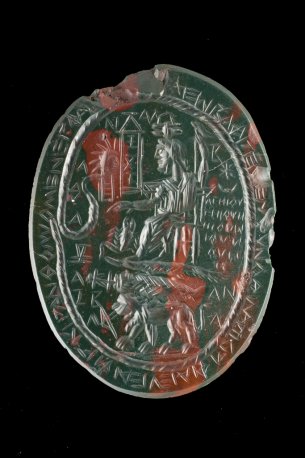Magical Gems including "Magical Gem" with Serapis, Uroboros, and Incantations
Egyptosophy
Magical Gems including "Magical Gem" with Serapis, Uroboros, and Incantations [ edit ]
Earlier Egyptian amuletic traditions reach a culmination in the Graeco-Egyptian magical amulets, in which image, text, and object interact more intensely than ever before. These ‘gems' reflect a synthesis of elements from the religions of Egypt, the Graeco-Roman world, and the Judaeo-Christian tradition. The majority of specimens appear to date to the second through third centuries CE, with some motifs continuing into the Byzantine Period. The most common materials for the gems are jasper, haematite, chalcedony, lapis lazuli, rock crystal, carnelian, agate, obsidian, and steatite; precious gems and metals are rare. Persian and Babylonian influences are present, and Jewish influence appears in the names of power. Divine names of the Graeco-Roman world are present as well. Nothing, however, dominates like the Egyptian imagery, centered often on a great pantheistic deity.
The magical gems were not static objects, but physical "gears" in the vocal machinery of elaborate magical rituals and incantations. They were also worn as jewelry--the Roman scholar Pliny the Elder writes (Natural History 33, 41): "Now, indeed, men also are beginning to wear on their fingers Harpocrates and figures of Egyptian deities." Magical papyri describe tying them with string, or placing them in a pouch worn around the neck.
Period
1st-2nd Centuries CE
Dimensions
H. 4.25cm, W. 3.12cm
Material
Heliotrope
Museum
Yale Babylonian Collection
Accession Number
2492























